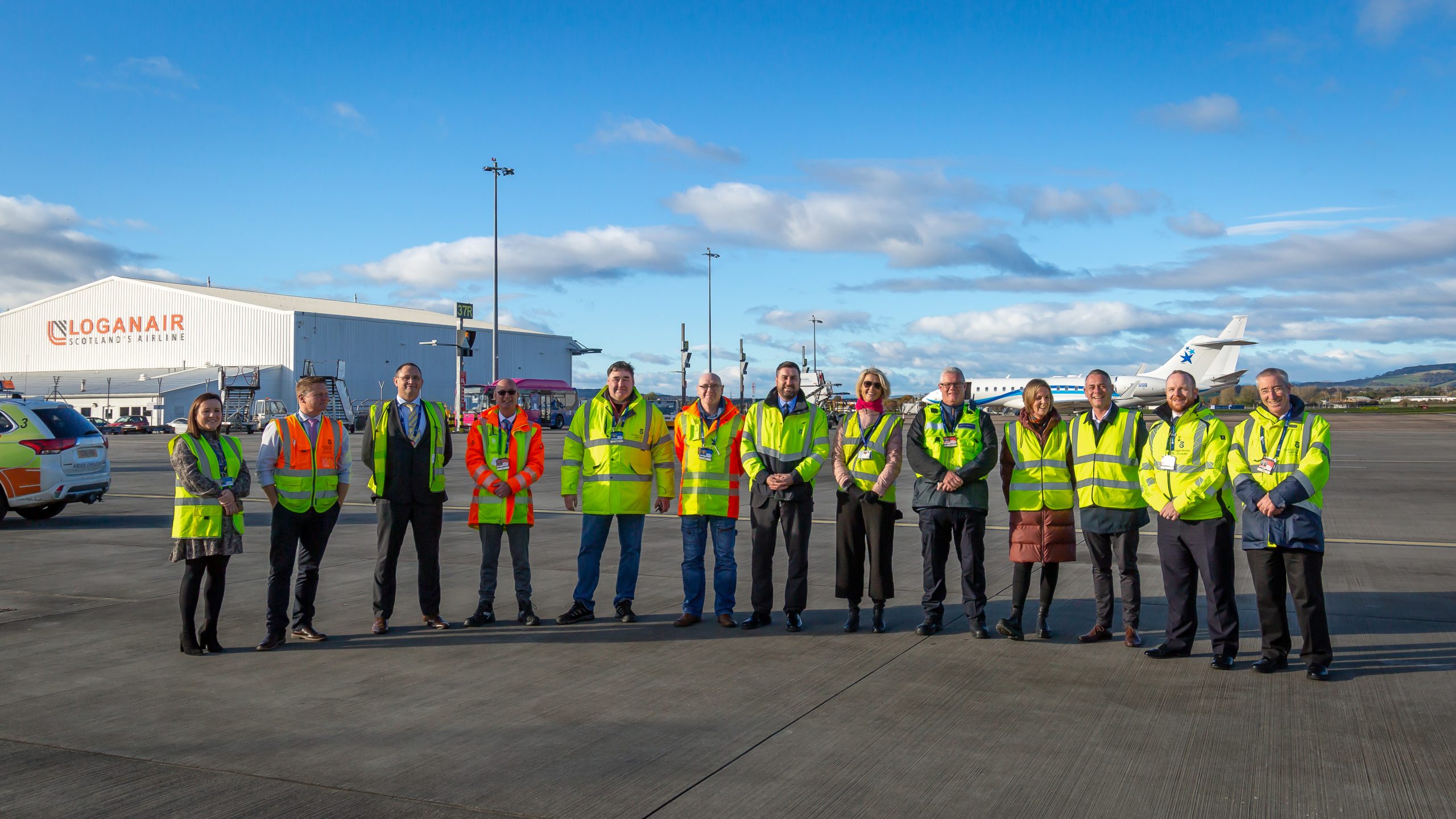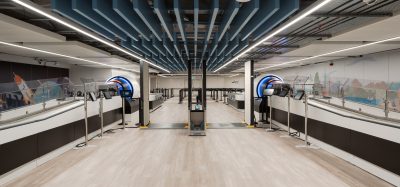Climb every mountain
- Like
- Digg
- Del
- Tumblr
- VKontakte
- Buffer
- Love This
- Odnoklassniki
- Meneame
- Blogger
- Amazon
- Yahoo Mail
- Gmail
- AOL
- Newsvine
- HackerNews
- Evernote
- MySpace
- Mail.ru
- Viadeo
- Line
- Comments
- Yummly
- SMS
- Viber
- Telegram
- Subscribe
- Skype
- Facebook Messenger
- Kakao
- LiveJournal
- Yammer
- Edgar
- Fintel
- Mix
- Instapaper
- Copy Link
Posted: 27 December 2023 | Ronald Leitch | No comments yet
For International Airport Review’s Issue 3, Ronald Leitch, Operations Director at Glasgow Airport, explained what was required to deliver one of the largest logistical head of state operations ever seen at a UK airport, the COP26 and restart after the pandemic.


Airport operations are much like climbing a mountain, preparation is key to success and it can always be better next time. Ben Lomand mountain, Scotland.
Over the last three years, the thousands of people who work across Glasgow Airport have been on what I can only describe as an unforeseen expedition.
Following the lifting of the last restrictions in March 2022, the welcome restart of international travel meant that from an almost standing start we had to rapidly climb a mountain that we would normally have trained and prepared both physically and mentally for several months in advance.
Our passenger numbers during the last three years – going from two million passengers in 2020 and 2021 to over 6.5 million 2022 and a forecasted 7.5 million this year – demonstrate it was no gentle ascent.
On route
Glasgow Airport is situated in the central belt of Scotland, surrounded by the stunning Clyde Valley with the hills and rivers providing a beautiful back drop to those arriving and departing. Visible from its terminal is Ben Lomond – the most southerly Munro (a mountain over 3,000ft) in Scotland.
When setting out to scale a Munro you need to consider your own condition, efficiency and readiness. How we approached our operational readiness in 2022 and again this year reminded me of the significant preparation required when climbing and wanted to share some of my own learning outcomes which I continue use today.
Glasgow Airport has a diverse mix of passengers, routes and aircraft, from Loganair’s 16-seat Twin Otter to the 517-seater Emirates A380 superjumbo. Our diverse passenger profile includes everything from holidays and business trips to mainland hospital visits to homecomings, so delivering an efficient service for all our customers requires means something different for every journey and it is our responsibility to understand those demands and align partners across the airport.
People
In any climb, having the right people in the right place at the right time is critical to success. For the passenger journey at the airport during the initial restart in March last year, we worked with hundreds of organisations on campus to share data and insights into passenger reporting profiles.


Having the right people in the right place at the right time is crucial. The legacy of communication and collaboration which was critical in delivering COP26 has played an important role in the airport’s restart in 2022. CREDIT: GLASGOW AIRPORT
Following two years of virtually no international travel, the trends you would normally expect to manage changed dramatically. A lack of flying, two years of lockdown and huge pent-up demand led to a significant change in behaviours, and this led to challenges in check-in, security and dwell-time airside against stretched capacity at peaks.
Our diverse passenger profile includes everything from holidays and business trips to mainland hospital visits to homecomings, so delivering an efficient service for all our customers requires means something different for every journey”
We worked with our campus partners to ensure we understood the flow management of the terminal, sharing expected passenger reporting profiles and our resource plan for check-in, security, gates, stands and arrivals facilities weekly through collaboration platforms and in depth twice-daily reviews. We knew the process needed to be in balance to optimise the efficiency of the flow of passengers to protect the service delivery and our commercial products. We use the Copenhagen Optimisation products Better Forecast and Better Security to analyse the actual passenger flows from boarding card scanning, which gives the time customers report to security and allows us to use the data to support staff rostering across all departments. This data was critical at a time when recourses were stretched and allowed us to align staff rosters to the new passenger flow.
Infrastructure
With any mountain, the path is often worn, mostly dependable, documented within a guidebook and well maintained by the landowners. This is no different to airport assets. From the lower use during 2020-2021 to operating at peak for periods of the day in 2022-2023, airport assets saw challenges like never before. While our assets continued to be well maintained during the pandemic, when international air travel returned, they were being operated by staff who were new to the industry who had to be trained and be able to demonstrate the competence required to use equipment such as airbridges and baggage systems. This did slow down the process and needed to be supported to ensure the safety of our people and passengers was always the highest priority.
Glasgow Airport has IS05501 certification for its approach to asset management and application of that standard has helped guide and shape our methodology to strategic asset management plans through to operator use and the training required. Business-led asset owners supported by our airport engineering team, review and assess all assets in their departmental area. They work closely with our engineering and capital teams to review maintenance schedules and replacement plans.
Airfield pavements have a developed programme and inspection regime that supports the long-term business planning of the replacement of taxiways, stands and runway surfaces. This system supports the safe operation of the pavements and delivers a clear vision to the airport’s own senior management and executive board of the projected spend over a 10-year horizon. This method protects operational performance and supports airline operations by reducing unplanned closures of pavements, which would ultimately impact schedules and efficiency.
Communication
Like any guide leading a team on a climb, we had to deliver strong leadership during a period of acute growth over the last two years. Our work supporting the successful delivery of 2021’s COP26 in Glasgow is a great example of our strengths in leadership and resilience.
The global climate summit saw the airport welcome 75 world leaders and heads of state as well as and thousands of attending delegates in the middle of a pandemic that had a devastating impact on the aviation industry. We incorporated a multi-agency model during COP26 that was spearheaded by the airport’s leadership team with the support of dozens of campus and external partners to great success at a time of significant cost and resource restraints.
Meeting monthly to review risks, readiness and response was a fantastic platform to deliver efficiencies across all areas of operation at the airport by focusing on a plan and a joint approach to how it was delivered. The removal of obstacles on the call and subsequent actions saw cost, service and safety benefit as best practice and lessons learned were shared in real time.
This openness across organisations on a collective approach to delivering for passengers using the airport highlighted the camaraderie of organisations understanding the inter-dependences and need to perform for each other to succeed.
The legacy of this approach during COP26 played an important role in our restart in 2022. The monthly meetings continued and helped nurture relationships, connections and most importantly produce tangible actions to improve operational efficiency. The results were evident too. Waiting times reduced, sales increased, and customer satisfaction improved. We have continued this group into 2023 and see it as part of our DNA to ensure we keep focus for 2024 and beyond.
Reaching the peak
I climbed Ben Nevis, the highest peak in the United Kingdom at 1,345 metres, a decade ago. After a very tough climb, I kept thinking about how much I looked forward to getting back down again. Nothing prepared me for reaching the peak and the sense of elation, joy and desire to do it all over again, but make some changes next time. Those changes were small, such as to carry less in my backpack and invest in better footwear and socks to reduce the chaffing. I made these changes when I climbed back up Ben Nevis in 2017 and took 45 mins off my previous time because I was better prepared. This optimisation is no different to our approach at Glasgow Airport. It is critical that we review our performance and improve on it daily. I see with pride many of my own team and partners smile at the success of peak days and events that go well. This is always followed by a look back on what could have made it even better and a willingness and passions to adapt plans and processes to make it better tomorrow.
As we continue to focus on our industry’s recovery with year-on-year growth, the climb ahead is steeper, the expedition has less worn paths and in many cases lacks guides. Exciting times lie ahead as we continue to work with our airport partners and wider industry colleagues on how we shape Glasgow Airport for the future. It is critical that we do not work in silos and work across airports collectively to continue to deliver in the most efficient way for the communities we serve, learning from our success and challenges and not being afraid to trial and not succeed. Working with government, trade organisations, partners and suppliers, developing products and process improvements is essential because what is certain is the need to keep going and to improve and knowledge to understand that once we reach one peak, there will always be another in the distance to climb.
With 282 Munros in Scotland, there are plenty for us at Glasgow Airport to climb and enjoy in the years ahead.


About the author
Ronald Leitch
Having first joined as part of a management trainee programme in 2000, Ronald has held a number of senior roles at Glasgow Airport and the wider AGS group with a broad range of responsibilities across aerodrome, security, capital and infrastructure and terminal operations.
Ronald was also Operations Director at Aberdeen in 2015 before returning to Glasgow to lead the capital and engineering functions.
Ronald led the airport’s operational response for COP26 – one of the largest logistical head of state operations ever seen at a UK airport with more than 75 world leaders and tens of thousands of delegates and visitors attended the global climate summit in Glasgow in November 2021.
His wealth of operational knowledge and experience across more than two decades continues to be invaluable to AGS Airports. This knowledge was critical to ensuring the delivery of lifeline and critical services during the COVID-19 pandemic and Glasgow Airport’s continued recovery.
Issue
Related topics
Airside operations, Conferences and events, Passenger experience and seamless travel, Sustainable development


















